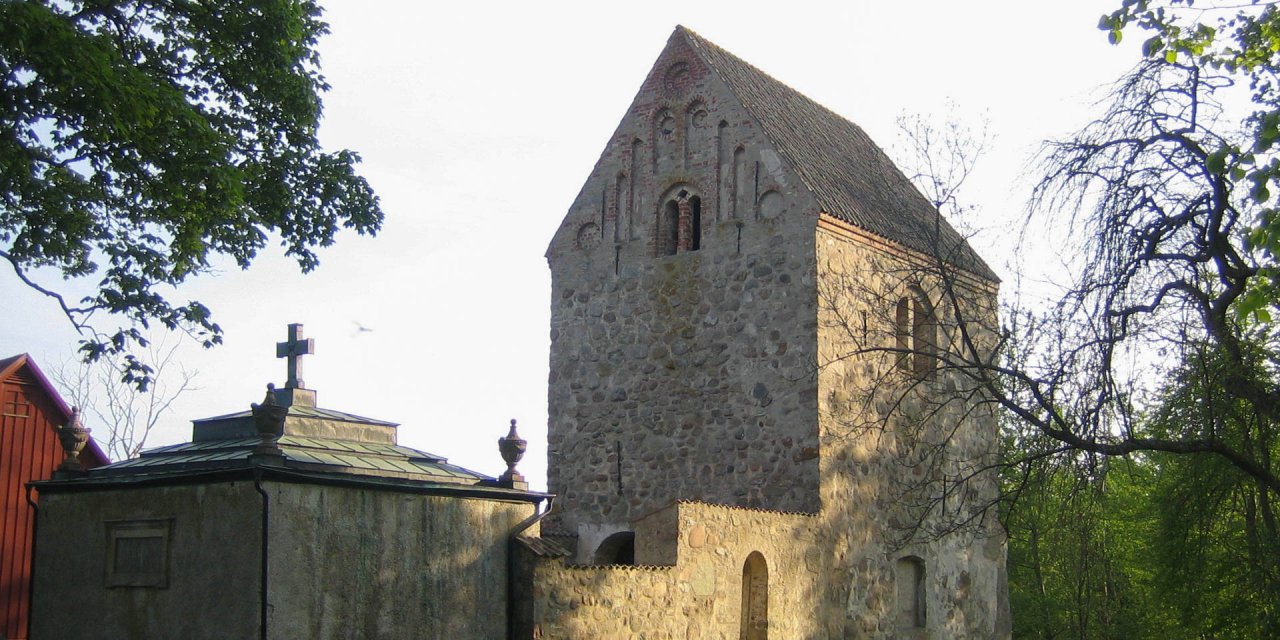

Stjärneholms Borgruin
Castle ruin near Skurup
Stjärneholms Borgruin is the ruin of a country castle from the 16th century, located just three kilometres outside the city centre of Skurup in the middle of Skurups Kommun.
The ruins of Stjärneholm Castle are located on an island measuring 60 x 70 metres, surrounded by a moat up to 25 metres wide. On the north side, the moat is partly silted up and overgrown with bushes. On the south side, where a drawbridge used to cross the moat, a fixed wooden bridge now provides access to the island.
At the outer sides, the moat was additionally enclosed by a high earth wall and the remains are still eight metres wide and two metres high on the south side of the moat. The earth wall was not a defensive structure, but prevented the water from running out.
The whole complex, despite its name and the moat, was never a castle in the sense of a military fortification. Rather, it was a manor house where the quality of living was paramount and the moat served to keep uninvited guests away and to provide a certain protection against occasional peasant uprisings.
Exploring Stjärneholms Borgruin
When you enter the island, there is not much to see of the ruins at first, but there is all the more evidence that nature had a lot of time to reclaim its place. The island is overgrown with high bushes and trees, including some mighty old oaks. As the ruins are not visited very often, an intensive flora has also developed on the ground with summer flowering plants such as common cowslip (Primula veris), rampion bellflower (Campanula rapunculus) and early-purple orchid (Orchis mascula).
At the northern end of the island you will find the remains of the former manor house, partly overgrown with greenery. Construction of the manor house began in the 1550s and its walls were torn down again some 70 years later. The ruins consist of the foundation walls of the main house, which are on average one metre high and about one metre wide, with two wing buildings, which all together formed a rectangle open to the south. Some parts of the former cellar vaults of the west wing and the main building are still visible.
The owner of Stjärneholm Castle was the Danish councillor Mogens Gyldenstierne, who at the age of 48, married Anne Sparre, daughter of the councillor Mourits Sparre and owner of Svaneholm Castle and the surrounding land. After the death of Mourits Sparre, Anna and her brother Jacob inherited the Svaneholm estate in equal shares, with Anna transferring the administration of her inheritance to her husband Mogens.
In the course of inheritance disputes the estate was divided into the estates of Svaneholm and Stjärneholm and the castle of Stjärneholm was built. Through inheritance and purchase, Svaneholm fell in the next generation to one of Anna and Mogens' sons. Both estates were thus owned by the Gyldenstierne family and were reunited under the name Svaneholm. The country estate Stjärneholm was therefore no longer needed and was demolished sometime between 1613 and 1624.



